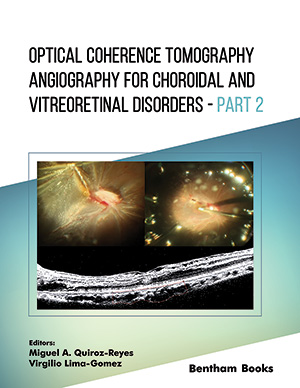Abstract
Background: Ketamine is a widely used anesthetic agent. Although the potential adverse effects of ketamine use in juvenile age are uncertain, certain studies reported that children exposed to recurrent anesthesia could face an increased risk of neurodevelopmental deficits in motor function and behavioral risks. We aimed to investigate the long-term effects of repeated exposure to various ketamine doses on anxious behavior and locomotor activity in juvenile rats.
Objective: We aimed to investigate the long-term effects of repeated exposure to various ketamine doses on anxious behavior and locomotor activity in juvenile rats.
Methods: Thirty-two Wistar Albino juvenile male rats were randomized into 5 mg/kg, 20 mg/kg, and 50 mg/kg ketamine (KET) and saline (Group C) Groups and KET was administered for 3 consecutive days at 3-hour intervals in 3 doses. Ten days after the last KET dose, behavioral parameters were analyzed with an open field test (OFT), elevated plus maze (EPM), and light-dark box (LDB). Satistical analysis was conducted with Kruskall-Wallis test followed by Dunn's Multiple Comparison Test.
Results: Unsupported rearing behavior decreased in 50 mg/kg KET Groups when compared to Group C. Incorrect transition time, total grooming time, and transfer latency time increased significantly in the 50 mg/kg KET Group when compared to Group C.
Conclusion: These results suggested that 50 mg/kg KET led to anxiety-like behavior and destroyed memory and spatial navigation. Ketamine doses were associated with late effects of ketamine on anxiety- like behavior in juvenile rats. Further studies are needed to determine the mechanisms that play a role in the different effects of ketamine doses on anxiety and memory.
Keywords: Anxiety, ketamine, locomotor activity, memory, rat, spatial navigation.
[http://dx.doi.org/10.1021/jm00326a019] [PMID: 14332667]
[http://dx.doi.org/10.3389/fnhum.2016.00612] [PMID: 27965560]
[http://dx.doi.org/10.1038/aps.2016.5] [PMID: 27018176]
[http://dx.doi.org/10.3389/fnins.2021.672526] [PMID: 34566558]
[http://dx.doi.org/10.1017/S1092852919001238] [PMID: 31339086 ]
[http://dx.doi.org/10.1016/j.bja.2021.06.005] [PMID: 34272059]
[http://dx.doi.org/10.1097/ANA.0000000000000027] [PMID: 24275940]
[http://dx.doi.org/10.1101/cshperspect.a005710] [PMID: 22510460]
[http://dx.doi.org/10.1097/ALN.0000000000000673] [PMID: 25901843]
[http://dx.doi.org/10.1016/S0166-4328(02)00272-3] [PMID: 12644276]
[http://dx.doi.org/10.1016/j.tacc.2014.03.002]
[http://dx.doi.org/10.1038/nature17998]
[http://dx.doi.org/10.1038/s41380-021-01246-3] [PMID: 34376822]
[http://dx.doi.org/10.3390/brainsci11010027] [PMID: 33383707]
[http://dx.doi.org/10.1097/ANA.0000000000000121] [PMID: 25144506]
[http://dx.doi.org/10.1016/j.brainresbull.2006.01.010] [PMID: 16564431]
[http://dx.doi.org/10.3389/fnbeh.2016.00226]
[http://dx.doi.org/10.1177/0023677217738268] [PMID: 29310487]
[http://dx.doi.org/10.1037/h0071444]
[http://dx.doi.org/10.1016/S0014-2999(03)01272-X] [PMID: 12600700]
[http://dx.doi.org/10.1016/j.bbr.2019.112084]
[http://dx.doi.org/10.21307/ane-2018-031] [PMID: 30624431]
[http://dx.doi.org/10.1016/0166-4328(94)90008-6] [PMID: 7913324]
[http://dx.doi.org/10.21307/ane-2020-022] [PMID: 32990283]
[http://dx.doi.org/10.1080/10253890.2018.1438405] [PMID: 29451062]
[http://dx.doi.org/10.1038/nrn.2015.8] [PMID: 26675822]
[http://dx.doi.org/10.1007/BF00504983] [PMID: 6149466]
[http://dx.doi.org/10.1016/0165-0270(85)90031-7] [PMID: 2864480]
[http://dx.doi.org/10.4314/tjpr.v18i11.13]
[http://dx.doi.org/10.1038/srep31286] [PMID: 27503239]
[http://dx.doi.org/10.3389/fnbeh.2018.00304] [PMID: 30574075]
[http://dx.doi.org/10.1016/0091-3057(80)90067-2] [PMID: 6106204]
[http://dx.doi.org/10.1016/j.neuropharm.2012.12.009] [PMID: 23337256]
[http://dx.doi.org/10.1016/j.neuroscience.2015.01.008] [PMID: 25595985]
[http://dx.doi.org/10.1016/j.biopsych.2013.04.027] [PMID: 23790225]
[http://dx.doi.org/10.1038/srep21322] [PMID: 26888470]
[http://dx.doi.org/10.3791/52434] [PMID: 25742564]
[http://dx.doi.org/10.1016/j.lfs.2010.09.004] [PMID: 20837032]
[http://dx.doi.org/10.3389/fpsyt.2021.659052] [PMID: 34045982]
[http://dx.doi.org/10.1016/0091-3057(85)90291-6] [PMID: 3991775]
[http://dx.doi.org/10.1016/j.jpsychires.2018.02.006] [PMID: 29475017]
[http://dx.doi.org/10.4196/kjpp.2019.23.1.81] [PMID: 30627013]
[http://dx.doi.org/10.1007/s11064-018-02715-y] [PMID: 30656595]
[http://dx.doi.org/10.9758/cpn.2021.19.1.93] [PMID: 33508792]
[http://dx.doi.org/10.4303/jdar/236060]
[http://dx.doi.org/10.1016/j.nbd.2019.104669] [PMID: 31707118]
[http://dx.doi.org/10.1155/2020/5798285] [PMID: 32308676]
[http://dx.doi.org/10.1016/S1474-4422(13)70278-3] [PMID: 24556010]
[http://dx.doi.org/10.3892/mmr.2020.11328] [PMID: 32705208]
[http://dx.doi.org/10.30802/AALAS-CM-18-000053] [PMID: 30696519]
[http://dx.doi.org/10.2147/DDDT.S221437] [PMID: 31695324]
[http://dx.doi.org/10.3791/52587] [PMID: 25867960]
[http://dx.doi.org/10.1038/nature10130] [PMID: 21677641]
[http://dx.doi.org/10.2399/ana.15.027]
[http://dx.doi.org/10.1017/S1461145714001011] [PMID: 24963561]
[http://dx.doi.org/10.1001/archpsyc.63.8.856] [PMID: 16894061]
[http://dx.doi.org/10.1016/j.ijdevneu.2009.06.010] [PMID: 19580862]
[http://dx.doi.org/10.1093/toxsci/kfn270] [PMID: 19126600]
[http://dx.doi.org/10.1126/science.283.5398.70] [PMID: 9872743]
[http://dx.doi.org/10.1016/j.ntt.2018.11.004] [PMID: 30472095]
[http://dx.doi.org/10.2174/157015911795017155] [PMID: 21886601]
[http://dx.doi.org/10.1111/cns.12099] [PMID: 23575437]






























